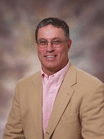 This week, NBC’s Today Show featured another story about bullying. As I have have mentioned in previous posts here and elsewhere, I believe that bullying is the quintessential cancer on our lives in places of business, in the military, politics, and relationships of all types. The good news – actually the very good news – is that there has been some incredible work being performed on this topic through the efforts of Dr. Matt Masiello at my former place of employment, the Windber Research Institute in Windber, PA. Grants through the Highmark Blue Cross Foundation of Pittsburgh have fueled this initial effort and the academic and quantitative analysis being done by Clemson University has documented this work. I believe that this joint effort is a magnificent example of what can be done to change the future course of events currently being controlled by bullies.
This week, NBC’s Today Show featured another story about bullying. As I have have mentioned in previous posts here and elsewhere, I believe that bullying is the quintessential cancer on our lives in places of business, in the military, politics, and relationships of all types. The good news – actually the very good news – is that there has been some incredible work being performed on this topic through the efforts of Dr. Matt Masiello at my former place of employment, the Windber Research Institute in Windber, PA. Grants through the Highmark Blue Cross Foundation of Pittsburgh have fueled this initial effort and the academic and quantitative analysis being done by Clemson University has documented this work. I believe that this joint effort is a magnificent example of what can be done to change the future course of events currently being controlled by bullies.
The Today Show story that I saw featured the Massachusetts school where, due to cyber-bullying, a young girl committed suicide last year. Apparently, another girl is now having the same experience at the same school. With the help of programs like this comprehensive anti-bullying program, the former Secretary of Education from PA, Jerry Zahorchak, (now Superintendent of the Allentown PA school system), embraced the effort to quell and discourage this type of destructive behavior. And the program, under the direction of Dr. Matt Masiello has successfully been introduced across the entire State of PA. (Matt had started the Allegheny County’s Goods for Guns program in 1994, when he was the head of pediatric intensive care at Allegheny General Hospital. To date, this program is responsible for collecting more than 11,000 illegal guns from the streets of Pittsburgh.) Matt has had the same success with this anti-bullying program. Now, both Massachusetts and Maryland are looking into embracing this effort.
This anti-bullying program is based on a European program with which Dr. Masiello had become familiar. This is a school system-wide effort that is very well documented and results in tremendous awareness and reduction of bullying at all grade levels.
The trainers bring a group of teachers and administrators together in the school system, and then “train the trainers” as to how this effort can become part of the philosophy of the school. They start the training in the spring, typically launch the school wide effort in the fall and run it for at least a year. During that time, detailed records are kept measuring outcomes.
Matt is a wonderful physician, a truly giving person and a saint of a man who is the only U.S. representative on the board of the World Health Organization’s Health Promoting Hospitals program. I hired him before I left Windber Research Institute, and he has worked tirelessly to address both this problem and the problems of childhood obesity.
The Olweus Bullying Prevention Program (Olweus.org on the web, @Olweus on Twitter) has impacted more than 400 school districts and 20% of all school-aged children in Pennsylvania. It has also had up to a 50% reduction in student reports of bullying …and bullying others.
For more information, please contact me or Dr. Matthew Masiello at the Windber Research Institute.








